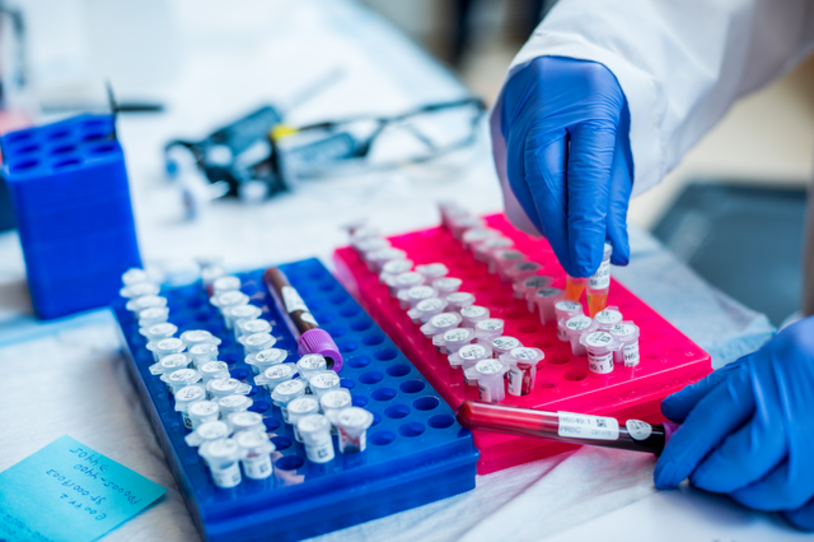
In a breakthrough earlier this year, researchers validated the first test that can detect Parkinson’s disease (PD) biology in living people. Called the α-synuclein seeding amplification assay (αSyn-SAA), the test uses spinal fluid to reveal a key biomarker of the disease — abnormal alpha-synuclein — in people diagnosed with Parkinson’s as well as people at a high risk of developing it but who have not yet shown symptoms.
Now, in another promising step forward in biomarker development, researchers at Duke University School of Medicine have found a new test for detecting PD. Called Mito DNADX, this test uses blood to detect damage in the DNA inside of mitochondria, tiny powerhouses in cells that malfunction in Parkinson’s. The researchers showed that people diagnosed with PD have measurably more mitochondrial DNA damage than people without PD.
The finding, which was published in Science Translational Medicine, constitutes another biomarker for Parkinson’s, one that is based on measurements in blood.
“Blood-based biomarkers for diagnosing PD and measuring its progression are a critical need in PD research. What’s especially exciting is that the data suggests the mitochondrial changes occur prior to developing symptoms, so the test could be used for early detection,” said Mark Frasier, PhD, The Michael J. Fox Foundation (MJFF) chief scientific officer. He noted that the test is robust and reliable, but it still has limitations that the researchers are working to address to make it more usable.
The new biomarker is similar to αSyn-SAA in diagnosing PD objectively based on biology, but mitochondrial DNA and alpha-synuclein tests measure different aspects of Parkinson’s. Both are expected to play an important role in accurate, early diagnosis that leads to improved care and treatments. Because of the complexity of the PD process, the field expects to need many different biomarkers — it’s not just one and done.
So, what does this mean for Parkinson’s research, and care?
While this discovery is another sign of the heartening progress in the development of Parkinson’s biomarkers, it is important to note that this news does not yet broadly change how doctors diagnose or treat PD.
Researchers, however, are planning future studies to validate and improve the blood test and learn more about the role of mitochondrial DNA damage in PD. If the test is optimized, it could be used in clinical trials to identify drugs that reverse or halt mitochondrial DNA damage and the disease process. Several drugs that target mitochondria are in development and could reach human testing in the next few years, according to Frasier. “The blood test could be used in trials of these drugs help to enroll individuals with PD who have high levels of mitochondrial damage, increasing the chances that they will benefit from them,” he said.
Studies using biomarkers, such as this new test for mitochondrial DNA, are critical to deepening understanding of the biology of PD, including when it starts and how it develops — and additional biomarkers for PD could be coming soon. “There’s tremendous innovation in tests to diagnose Parkinson’s disease better and earlier, and it’s happening rapidly,” Frasier said.
Since its start, MJFF has funded biomarkers and invested in a collection of data samples from people with Parkinson’s for biomarker discovery and validation. Both αSyn-SAA and this new blood biomarker received grants from MJFF. Testing for the αSyn-SAA utilized the Foundation’s landmark Parkinson’s Progression Markers Initiative (PPMI) study, and testing for the blood biomarker utilized samples collected through a related initiative.
The takeaway from this finding? Biomarker development continues to be a rapidly evolving (and critical) area of scientific pursuit. The discovery of new biomarkers sits on the leading edge of a new biology-based era in Parkinson’s disease, one that includes earlier detection of the disease and the promise of better therapies for slowing or stopping its progression at any point in the disease process.
Breakthroughs like these are not possible without you and your participation in research. Learn more about PPMI and join the study that’s changing everything.